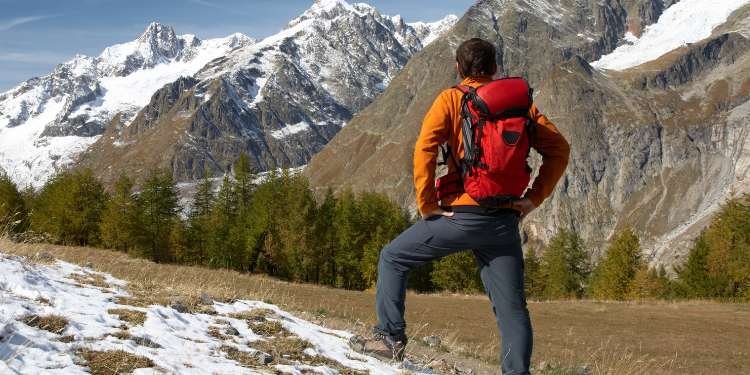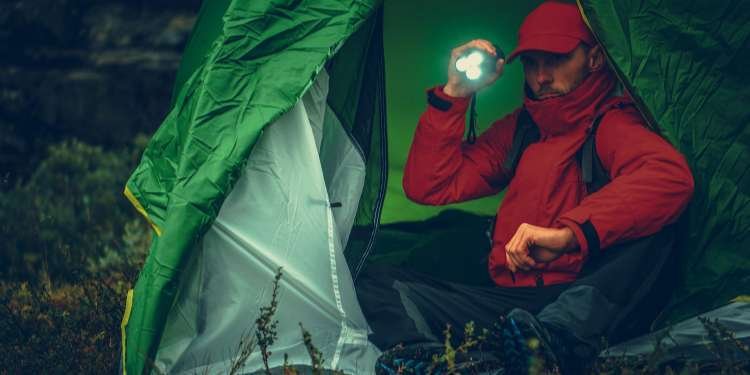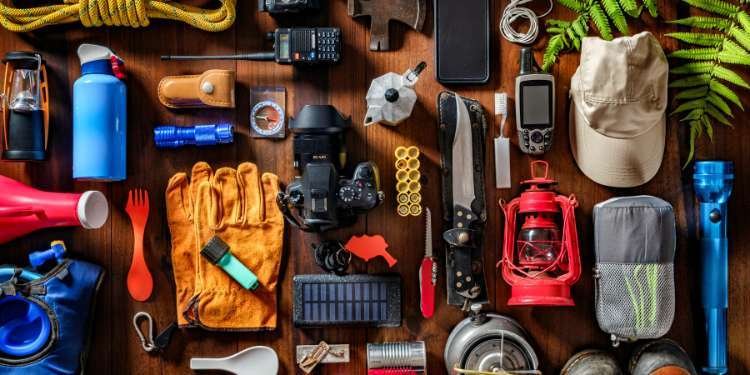Walking through nature is more than simply traveling in a forest. For some, it lets them to get away from daily worries and reconnect with the amazing natural world around us. A hike gives you challenges that excite your senses and test your body, plus it lifts your spirit. Trekking gives benefits beyond just staying healthy. This Hiking for Beginners article will guide you in-depth

Embarking on your very first hiking adventure is an exciting prospect. If you’re new to the world of trekking through nature this hiking for beginners guide is for you. Let’s take a moment to introduce you to the engaging activity of hiking. Whether you seek serene walks in the woods or the exhilaration of reaching a mountain summit, this outdoor adventure offers a range of experiences for everyone. This hiking for beginners guide will provide you with essential insights, preparing you to hit the hiking trails with confidence and enthusiasm. Welcome to the world of hiking – your journey starts here!
Different Types of Hiking for Beginners?
Different types of hiking such as Day hiking, Backpacking, Mountaineering, Trail running, Thru-hiking.
Day Hiking
One common type of hiking is day hiking. This involves setting out on a trail for a few hours or a full day and returning to the starting point by nightfall. Day hikes are ideal for beginners or those who prefer shorter excursions.
Backpacking
Takes hiking to the next level by incorporating overnight stays in the wilderness. Backpackers carry all their necessary gear and supplies in a hiking pack as they embark on multi-day trips. This type of hiking allows for more exploration and immersion in nature.
Mountaineering
Involves scaling mountains and reaching high-altitude summits. It requires specialized skills, equipment, and knowledge of technical climbing techniques. Mountaineers often face rugged terrain, extreme weather conditions, and physical challenges during their expeditions.
Trail Running
Combines the thrill of running with the beauty of nature. Trail runners navigate through trails at a faster pace than traditional hikers while enjoying scenic views along the way. This type of hiking provides an excellent cardiovascular workout while immersing oneself in natural surroundings.
Thru-hiking
Refers to completing an entire long-distance trail from start to finish in one continuous journey. Examples include famous trails like the Appalachian Trail or Pacific Crest Trail. Thru-hikers face physical endurance challenges as they hike for weeks or months at a time.
By understanding these different types of hiking experiences – day hiking, backpacking, mountaineering, trail running, and thru-hiking – outdoor enthusiasts can choose their preferred adventure based on their fitness level, time availability, and personal interests.
Choosing A Hiking Trail
There are various simple ways to locate a hiking trail that meets your requirements:

Fitness: Assess your current physical condition. Remember, you want to go for a hike to enjoy yourself rather than suffer. Don’t be so optimistic in physical circumstances.
Distance: Picking the perfect trail distance for Hiking is highly Important. Keep in mind that your primary goal should be picking a trail that fits your interests, level of fitness, and time limits instead of trying to complete the hardest one.
Consider Seasonal Factors: When planning a hike, keep the seasons in mind. Due to weather conditions, some trails may be more difficult or closed during particular seasons. To guarantee a safe and enjoyable adventure, check for route restrictions, weather predictions, and trail reports.
Guidebook & Website: You may find all the information you need, including trail difficulty, distance, elevation gain, directions, water sources, trail features, and dog-friendliness, in guidebooks and online resources. Websites frequently have travel reviews from recent users, which can help you get an idea of the condition of the trail at the moment.
Time: Determine the duration you think the hike will take, taking into account your speed and the difficulty of the terrain. Consider taking stops for Snacks, Photos, and rest. Consider taking stops for Snacks, Photos, and rest.
Seek Local Advice: Contact a local association or a ranger station in the hiking area where you are planning to trip. Rangers can suggest treks for hikers of all skill levels and they are usually well-informed about trail conditions.
Select a Beautiful Location: Look for trails that lead to wonderful views, waterfalls, or unique scenery. A beautiful location not only enhances the overall experience but also serves as a pleasing end for your hike. Discover the main points of every route for the views or locations that interest you.
Be Flexible: Keep yourself flexible about changing your plans if unforeseen events arise. Weather changes, trail closures, or personal energy levels might require a change in your route. Having a backup plan or being available to try new trails increases the flexibility of your hiking experience.
Ask Experts: If you have friends or anyone you know as a hiking enthusiast, ask them to recommend certain routes for you.
Learn more about Hiking trails here.
Choose Your Hiking Gear

Ah, the importance of the best hiking gear! It’s the difference between a blissful, enjoyable trek and a disastrous, uncomfortable one. You see, hikers need a few fundamental pieces of equipment to ensure a smooth journey such as lightweight waterproof hiking shoes, suitable clothing, and compact best hiking backpacks.
These hiking essentials will make your hike comfortable and enjoyable. And don’t forget to pack water bottles or a hydration bladder, sunscreen, a hat, and a trusty first aid kit! If you’re planning an overnight trip, you’ll need a tent and a reliable flashlight. As you gain experience, feel free to experiment with different types of hiking gear to find what works best for you.
We’ll guide beginners through the hiking equipment they need in this chapter to ensure trouble-free hiking.
Hiking Footwear Guide
For a pleasant and restful hike, choosing the best hiking shoes is crucial. Investing in the best hiking boots is a great decision. These boots will shield your ankles during challenging hikes. Lightweight hiking sneakers or boots provide flexibility on easier trails without sacrificing stability. Waterproof hiking boots are a must. these hiking boots are truly a lifesaver when it comes to navigating rough terrain in unfavorable weather conditions.
Hiking sandals can be an ideal option during the hot summer weather and if the trail condition supports it. Proper fit and toe room are key to ensuring a comfortable and blister-free experience. By selecting a pair that fits well and provides ample space for your toes, you’ll be able to tackle even the most challenging trails with confidence and ease. Finally, think about factors including grip, comfort, durability, and conditions before purchasing shoes. A successful and pleasurable outdoor activity requires appropriate footwear, so pick wisely based on your preferred style and region.
Hiking Clothing Guide
Choosing the correct hiking clothes is essential for trail comfort and flexibility. To control body temperature and reduce sweat buildup, choose moisture-wicking base layers. Lightweight, breathable textiles are great for adapting to changing weather in hiking areas.
Try to wear quick-drying clothing to stay dry in unexpected rain, and dress in layers to facilitate easy temperature adjustments. You can take a waterproof jacket with you if the condition demands. Keep sunglasses and a hiking hat with a wide brim with you to protect yourself from the sun, To lessen the chance of blisters, wear comfortable, supportive hiking socks. You should prioritize your hiking outfits according to the trail conditions and season.
Hiking Backpack Guide
A carefully selected hiking backpack is a hiker’s trusted companion, providing an easy way to carry goods. Choose a lightweight, long-lasting model with adjustable straps for a good fit. Try to purchase a hiking pack that has multiple pockets that will help you manage your gear separately in the bag.
Make sure there is a slot for a water bottle or hydration reservoir which will be an ease for quick access to water. Your hiking pack should complement your hike by allowing you to easily carry essentials such as water, snacks, a first aid kit, and extra layers, enhancing your trail experience. Finally, select a proper-sized hiking bag considering your height, trail condition, and your fitness.
Hiking Food & Water Guide
Planning the right food and drink for a hike is crucial to maintaining energy levels throughout the trip. It’s important to pack lightweight, nutrient-dense snacks such as trail mix, energy bars, and dried fruits to fuel your adventure. Hydration is also essential, so make sure to bring plenty of water and consider investing in a hydration reservoir for easy drinking. In hot conditions, it’s especially important to drink plenty of water to avoid dehydration.
To maintain energy levels, it’s a good idea to balance your snacks with carbohydrates, proteins, and fats. To avoid discomfort, prioritize easily digested choices. Planning and packing the correct food and water ensures a well-nourished and hydrated experience, which improves endurance and enjoyment on the trail.
We have explained in the hiking for beginners guide a few of the essential gear that can be effective during the trail. Let’s discuss more about the accessoires,
Additional Essential Hiking Gears

Trail Permit or Pass: Make sure you have all of the necessary permits or passes for the trail you plan to hike.
Compass and Map: A detailed route map and a compass are important for navigating, especially in locations where GPS signals are weak.
Emergency Shelter: A space blanket or bivy tent, can protect in bad weather.
Headlamp or Flashlight: Even if you plan to finish your hike during the day, make sure you have a reliable light source. It’s useful if your hike takes longer than planned.
Knife: A multitool knife is useful for a variety of jobs and can be useful on the trail.
Waterproof Matches or Lighter: Having a reliable fire starter in an emergency might be vital for warmth or signaling.
Personal Medicine and First Aid Items: Customize your first aid kit to include any personal medicine.
Sunscreen and Lip Balm: Use sunscreen and lip balm to protect your skin from dangerous UV radiation, especially at higher temperatures.
Hiking Sticks: Hiking Poles Provide stability and decrease knee strain, especially on rough terrain.
Sunglasss: Excellent gear for eye comfort on a sunny day. Night vision sunglasses can be helpful during the night as well.
Camera: Capture the scenic views with a good camera or observe wildlife along the trail.
Binoculars: Binoculars are a great way to get closer to nature while keeping your distance. Learn more in our Best Hiking Binoculars article.
Trash Bags: Bring additional trash bags to ensure you leave nothing behind and dispose of any waste.
Hiking GPS: Handheld GPS devices use satellite signals to deliver precise location information. Under normal conditions, users should expect accuracy of 5 to 10 meters (16 to 33 feet).
Learn more in our Best Hiking GPS article.
Insect Repellent: Depending on the season and area, insect repellent may be effective in keeping annoying pests away.
Cash: It is advisable to have cash available when visiting some outdoor recreational areas as trailheads or parks may charge entry fees.
These hiking accessories will be very useful for a well-planned trip. Try to keep each according to your needs and trail demand.
Hiking With Friends

Hiking With Friends
Hiking with friends allows you to appreciate the group’s diversity while also accepting varied fitness levels and creating a supportive environment. In a group hiking usually hikers shared carrying equipment of each other. That’s a massive help
If you have buddies, ask them to take you for a hike. If you don’t know any hikers, many cities and towns have clubs that organize expeditions regularly. Books, events, and online social media community groups are all options. These are an excellent method to meet new companions.
Solo Hiking
If you’ve never gone before, we advise you to look for a hiking companion. If you are hurt, that person will also be present to assist you. If you have no other choice but to go on a solo hiking trip, start with short trips to well-known locations and make sure someone is aware of the location and projected duration of absence.
For Solo Hiking, Read this book.
Safety and Overcoming Fear
Preparing for your first hiking adventure can be both exciting and nerve-wracking, which is why understanding key safety measures is essential in overcoming fear and ensuring a positive experience. After addressing common concerns and safety tips in the “Safety and Overcoming Fear” section, it’s important to delve into the practical steps beginners can take to foster confidence on the trails.
First and foremost, choosing the right trail is critical; this means selecting a hike that matches your fitness level and experience. Additionally, equipping yourself with the best hiking gear, such as a reliable pair of boots, a map, a compass, and sufficient water, can help mitigate risk and provide peace of mind. It’s also advisable to hike with a companion, ensuring that help is at hand should you encounter any difficulties.
By taking these precautions and preparing adequately for your hike, beginners can transform trepidation into the excitement of discovering the great outdoors. Remember, every seasoned hiker was once a beginner, and your journey to becoming one with nature starts with a single step—preferably on a well-chosen path that promises safety and unforgettable adventure. We hope this Hiking for Beginners guide will be a remedy for your fear
Hiking Etiquette: Do’s And Don’ts
Stay on Designated Trails: To avoid damaging delicate ecosystems and to safeguard wildlife habitats, always stay on designated trails. Off-trail travel can cause soil erosion and upset the natural balance of the environment.
Yield to Uphill Hikers: Uphill hikers have the right of way. When passing individuals on the trail, move to the side and let those ascending continue without interruption to keep a steady pace. Yield
Leave No Trace: Carry all of your trash with you and properly dispose of it. Be mindful of the environment and try to leave the trail as clean as you can.
Respect Wildlife: Keep a safe distance from wildlife and avoid feeding or approaching animals. Human intervention can disturb their normal behavior, putting both wildlife and hikers at risk.
Reduce Noise: Enjoy nature’s peace by limiting noise levels to a minimum. Avoid loud conversations and music so that your fellow hikers may enjoy the peace of the outdoors.
Respect Other Hikers: Greet other hikers with a nice greeting or smile. Allow others to pass on narrow trails and give details about trail conditions when asked.
Control Your Pets: If you’re hiking with pets, make sure they’re on a leash and under control. Respect the trail’s pet policies to ensure the safety of wildlife, fellow hikers, and your four-legged companions.
Conclusion
The first hiking adventure can be an exhilarating experience that not only introduces you to the raw beauty of nature but also offers numerous physical and mental health benefits. By equipping yourself with the right gear, familiarizing yourself with trail etiquette, and starting with manageable trails, you’ll set the stage for a rewarding journey. Remember, it’s essential to respect the environment and always prioritize safety above all else. Whether you’re drawn to the serene solitude of the wilderness or the shared joy of a group trek, hiking presents a world of discovery at every turn.
Lace up your boots, embrace the spirit of adventure, and step confidently onto the path that nature has laid before you. And don’t forget, this is only the beginning—the trails await. This hiking for beginners article is our smallest effort to guide new hikers for their upcoming outdoor adventure. Happy hiking!
FAQ
Can I Go Hiking Alone As a Beginner, or Should I Always Have a Partner?
Absolutely! Hiking alone can be an incredibly rewarding experience even for beginners, allowing for personal reflection and a deep connection with nature. However, before venturing out solo, it’s essential to take certain precautions to ensure your safety. Start with short trails that are well-marked and frequented by other hikers. Always inform someone about your hiking plans, including the trail you’re taking and your expected return time. Equip yourself with a map, compass, and a basic hiking GPS app on your smartphone to stay on course. Additionally, pack the ten essentials, which include items like extra water, food and a first aid kit.
How Many Miles Should a Beginner Hike?
When determining how many miles a beginner should hike, consider not only physical ability but also the terrain and elevation changes you’ll encounter. As a fledgling hiker, aim to start with trails that are 1 to 3 miles in length with minimal elevation gain. This gentle introduction allows you to assess your comfort level and endurance while enjoying the outdoors. Remember, hiking is not just about the distance covered, but also about enjoying the journey and connecting with nature. Over time, as you gain confidence and strength, you can gradually increase the mileage and tackle more challenging hikes.
How Should I Prepare Physically for My First Hike?
Before lacing up your hiking boots for your inaugural trek, it’s wise to start with some basic physical preparations. Begin by incorporating cardiovascular exercises, such as brisk walking, jogging, or cycling, into your daily routine to build up your stamina. Don’t overlook the importance of strength training, focusing on your legs and core, which are crucial for navigating uneven terrains and steep inclines. Additionally, stretching regularly can enhance your flexibility and reduce the risk of injury. Remember, it’s not about pushing yourself to extremes, but rather gradually conditioning your body for the physical demands of hiking.
What are 3 Things a Beginner Hiker Should Know Before Starting?
Embarking on your hiking journey is an exhilarating way to connect with nature, but before setting out, three essential pieces of knowledge will set the foundation for a successful adventure. Firstly, understanding the importance of choosing the right trail cannot be overstated; it’s vital for beginners to start with hikes that match their fitness level and to research the trail’s length, elevation gain, and difficulty rating. Secondly, proper gear selection, including supportive footwear, moisture-wicking clothing, and well-fitting hiking backpacks, is crucial for comfort and safety.
Lastly, beginners should be well-versed in trail etiquette and environmental preservation, which means staying on designated paths, leaving no trace, and respecting wildlife. By keeping these essential tips in mind, first-time hikers can ensure a memorable and enjoyable experience in the great outdoors. Now, let’s delve deeper into how you can prepare for your first hiking trip, starting with the gear that will facilitate a safe and comfortable journey into nature’s splendor.
What are Some Essential Safety Tips for Someone New to Hiking?
If you’re new to hiking, understanding essential safety tips is paramount to ensure a fun and secure experience outdoors. As a beginner, always start by familiarizing yourself with the trail. Obtain a map of the area and study it or download a GPS app that works offline to keep you on the right path. It’s also vital to notify someone about your hiking plan and expected return time. This step is often overlooked, but it could save your life if an emergency arises and you’re out of reach. Additionally, make sure to assess the weather conditions before setting out – rapidly changing weather can be perilous if you’re not prepared. Pack layers of moisture-wicking clothing to stay dry and regulate body temperature.
Don’t forget to bring plenty of water to stay hydrated, as well as high-energy snacks to maintain your energy levels throughout the hike. Lastly, invest in a good pair of hiking boots with adequate support and traction – your feet are your primary mode of transport on the trail, and taking care of them is crucial. By keeping these safety tips in mind, novice hikers can confidently embark on their outdoor adventures. For more beginner-friendly hiking advice, continue with our comprehensive guide to get equipped with all the essential knowledge before hitting the trails.
What Should You Not Do While Hiking?
Beginners need to recognize that the trails offer an escape into nature, but this environment demands respect. Do not overlook the necessity of proper planning; this means avoiding impromptu detours which could lead you off marked trails and increase the chance of getting lost. Always notify someone of your hiking itinerary and expected return time. Equally crucial is refraining from overestimating your physical ability. Beginners should start with easier trails and gradually progress to more challenging hikes to prevent exhaustion or injury.
Furthermore, do not ignore local wildlife advisories. Remember that you are a visitor in the home of numerous species, so always maintain a safe distance from animals and refrain from feeding wildlife to avoid adverse interactions. Lastly, do not leave any trash behind; adhere to the principle of “Leave No Trace” to preserve the natural beauty for others and protect the ecosystem. This Hiking for Beginners blog aims to provide new hikers with the foundational dos and don’ts to make their outdoor experiences safe, enjoyable, and environmentally conscious.


